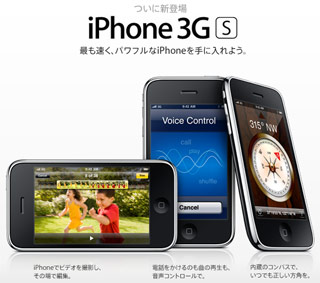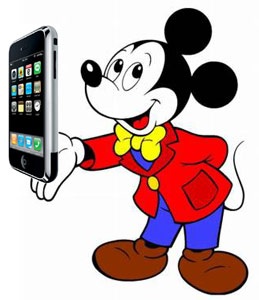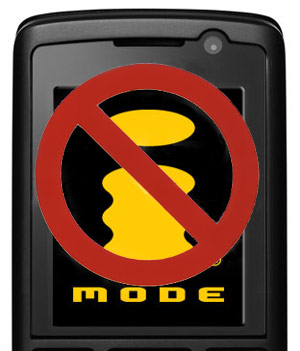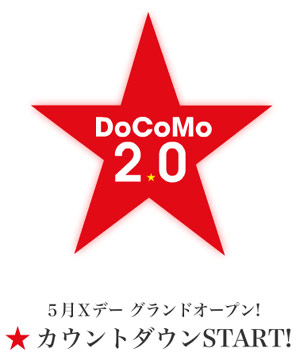 Symbian announced their 20 millionth handset sales milestone in Japan with a rather surprising Jekyl-and-Hyde campaign. First off, they ran a Fortune-500-style blitz – dubbed J20 – complete with CEO webcast and predictable press release – so far, so OK. If that was all they did, we’d certainly join in the chorus to congratulate them on a job well done. When any non-domestic entrant achieves 20 million sales of anything, much less ultra-cool Symbian smartphone installations, WWJ offers our heartfelt congratulations and more power to them.
Symbian announced their 20 millionth handset sales milestone in Japan with a rather surprising Jekyl-and-Hyde campaign. First off, they ran a Fortune-500-style blitz – dubbed J20 – complete with CEO webcast and predictable press release – so far, so OK. If that was all they did, we’d certainly join in the chorus to congratulate them on a job well done. When any non-domestic entrant achieves 20 million sales of anything, much less ultra-cool Symbian smartphone installations, WWJ offers our heartfelt congratulations and more power to them.
However, at the same time global HQ launched an akward attempt at what seems to be a viral ad. campaign – called BooHooForYou – with a dedicated website and anime themed video posted on YouTube. Since BHFY provides full English text and subtitles in the animation, the obvious target audience for this little stunt are folks outside Japan. The Japanese audio and English subtitles combined give viewers the distinct impression the site was made in Japan to poke fun at (lagging) European and American mobile markets.
Anyone who understands how Japan’s business and wider civil culture operates will tell you that remaining humble – especially when you otherwise have strong reason to brag loudly in public – is not only expected and practiced, but to do the opposite is highly insulting. Thus Symbian’s BHFY comes across as at least culturally inappropriate and at worst directly insulting.
WWJ editors have lived in Japan for several (many?) years, and we’ve watched closely to see how mobile industry players here build, market and protect their reputations and brand images; we can confirm that video comes across as far too condescending, childish and downright tragic in the way it portrays the Japanese as openly gloating “boo hoo for you.” (Subscribers login for the full rant.)
 Plenty of news today considering the recent announcement from Apple, the iPhone 3GS will hit here June 26th, so we thought it would be worthwhile to review where things stand to-date for Steves Amazing Device in Japan. Since both Apple and SoftBank Mobile have always refused to disclose unit sales, even targets for that matter, it has naturally been an ongoing obsession for many – how is the iPhone doing in Japan? There are several angles to approach this on so for starters lets just say that, while there seems to be recent awakening and therefore increased adoption, expectation often leads to disappointment.
Plenty of news today considering the recent announcement from Apple, the iPhone 3GS will hit here June 26th, so we thought it would be worthwhile to review where things stand to-date for Steves Amazing Device in Japan. Since both Apple and SoftBank Mobile have always refused to disclose unit sales, even targets for that matter, it has naturally been an ongoing obsession for many – how is the iPhone doing in Japan? There are several angles to approach this on so for starters lets just say that, while there seems to be recent awakening and therefore increased adoption, expectation often leads to disappointment.

 Only those who have been totally blocked-out from all media sources over the last year would wonder what an iPhone is as the so-called “Jesus Phone” has been in the mainstream headlines since even before it was officially unveiled in January. However, for a combination of reasons, there has only been mild speculation about when – or indeed how – it would become available in the Japanese market. Citing the initial lack of 3G capability, not too mention an ‘unusual’ operator revenue share arrangement, the story so far has centered around deployments in the US and Europe. Full skinny after the jump!
Only those who have been totally blocked-out from all media sources over the last year would wonder what an iPhone is as the so-called “Jesus Phone” has been in the mainstream headlines since even before it was officially unveiled in January. However, for a combination of reasons, there has only been mild speculation about when – or indeed how – it would become available in the Japanese market. Citing the initial lack of 3G capability, not too mention an ‘unusual’ operator revenue share arrangement, the story so far has centered around deployments in the US and Europe. Full skinny after the jump! Domestic market incumbant NTT DoCoMo came out with all guns blazing during their press conference at the Grand Park Hyatt in Tokyo on November 1st. For the first time ever they combined the launch for both of their upcoming 700 and 900 series models – a record 23 handsets unveiled at once – and the
Domestic market incumbant NTT DoCoMo came out with all guns blazing during their press conference at the Grand Park Hyatt in Tokyo on November 1st. For the first time ever they combined the launch for both of their upcoming 700 and 900 series models – a record 23 handsets unveiled at once – and the  The 3rd annual
The 3rd annual  The genesis of today’s Viewpoint was back in March, when we spotted
The genesis of today’s Viewpoint was back in March, when we spotted 
 Symbian
Symbian  On Monday 23 April NTT DoCoMo
On Monday 23 April NTT DoCoMo  A pleasant April Fool’s surprise for all WWJ regulars here today as we’ve finally moved our tired old website – circa 2003 – into the digital trash can. We have made a few changes, beyond the somewhat tricky migration from Nuke to Wordpress, with this new offering. The ‘tag cloud’ for keywords, ‘share this’ option (with easy article bookmarking) and ‘send to friends’ function, ‘related entries’ (below all posts), a mobile feed version and an improved archive structure should help you navigate the large amount of content WWJ now makes available. As the saying goes, you don’t realize how much stuff you have.. until you have to move it!
A pleasant April Fool’s surprise for all WWJ regulars here today as we’ve finally moved our tired old website – circa 2003 – into the digital trash can. We have made a few changes, beyond the somewhat tricky migration from Nuke to Wordpress, with this new offering. The ‘tag cloud’ for keywords, ‘share this’ option (with easy article bookmarking) and ‘send to friends’ function, ‘related entries’ (below all posts), a mobile feed version and an improved archive structure should help you navigate the large amount of content WWJ now makes available. As the saying goes, you don’t realize how much stuff you have.. until you have to move it!